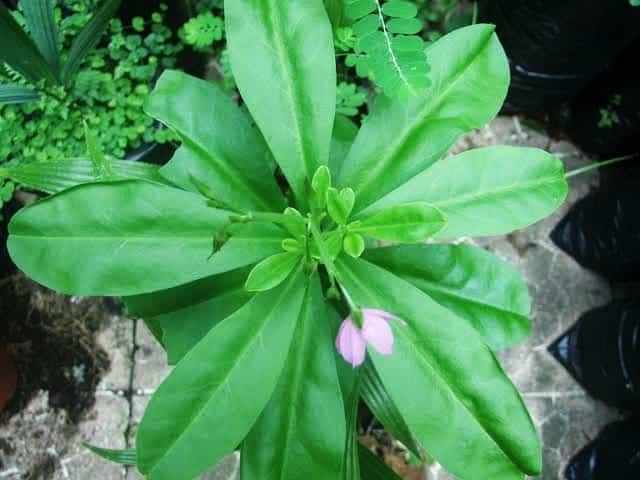Since we published an article on most lucrative farming ideas and business opportunities in Nigeria, we’ve been receiving requests for guides on how to plant specific vegetables. One of the top enquiries has been how to plant waterleaf in Nigeria. In response to that, we have prepared this comprehensive and easy-to-understand guide on how to plant waterleaf in Nigeria.
This is the last resource you need to start your waterleaf farm, so keep reading and follow every step to the end.
Botanically, waterleaf is known as Talinum Fruticosum or Talinum Triangulare. You recognize it with its edible, light green leaves.
This may come as shocking, but waterleaf is scientifically classified as a weed. Without waterleaf, however, we wouldn’t have some of our favourite delicacies such as Afang, Ukwoho atama, Edikan Ikong, Bitterleaf soup and even Melon soup (sometimes).
Contents
Why Plant Waterleaf: Nutritional Benefits
- Preparing waterleaf in combination with avocado and alligator pepper can be used to treat hypertension.
- Regular consumption of waterleaf can delay the onset of stroke and heart diseases, especially among the older population.
- Waterleaf is loaded with crude protein (22.1%) ash (33.98%) and crude fibre.
- A leaf of waterleaf is a rich source of lipids, vitamins and protein. It has as much protein as cowpea, millet, cashew nuts and peanuts.
- The plant exhibits a whole range of pharmacological and biological activities such as anti-fungal, anti-bacterial and anti-inflammatory properties.
- While it serves some medicinal purposes for humans, it also acts as green forage for management of rabbit feed.
All of these explain why there is a high demand for waterleaf. Some Akwa Ibom women confirmed this while speaking to a Straight News reporter. One of the women, Glory Jeremiah, said “Waterleaf farming is a viable source of income to us. One bed, depending on the size, can fetch you between N6,000 and N20,000. This is achieved in one month after planting waterleaf. From there on, we make it on a daily and weekly basis.”
Corroborating this, one of the women said most of them plant 300 beds of waterleaf in eight acres annually.
Now, let’s do the maths. Let’s say on the average; they make a profit of N10,000 from one bed. Multiply 10,000 by 300 beds, and you have the total amount these women make annually from waterleaf farming. A red collar job that pays N3 million annually is quite rare to find. That’s precisely the amount you can potentially make annually from farming waterleaf. There is truly a lot of business opportunities in the Agriculture sector.
We have more of your attention now, right?
By the way, waterleaf is planted most in South-South Nigeria since it constitutes a significant ingredient in their soups.
So, how do you plant your waterleaf? Let’s take a look at the step-by-step guide. First of all, choose a location.
1. Get a Good Land
Your land should preferably be sandy-loamy so that it can retain water. While waterleaf can grow almost anywhere, it thrives more in fertile soil with good moisture.
Like every plant, your waterleaf needs the right amount of sun too. So, ensure there is not preventing the access of sun to your waterleaf.
2. Get rid of the weeds
As much as waterleaf itself is a weed scientifically, that doesn’t mean it will co-habit well with other weeds if left to grow together. Weeds will always do what weeds do – hinder the growth of plants. And since waterleaf is the plant you want to grow, it’s essential to get rid of weeds for best results.
3. Raise the beds
Some people do not consider this compulsory, but it’s highly recommended. Make the bed size to be about 2m to 5m. Don’t forget to leave walking space between beds so you can walk freely and not match your waterleaf.
Create beds by tilling the soil, lift it from underneath. This is the type of soil believed to generally perform better in farming compared to the ones on the surface. This also helps with weed control and aeration.
Pro Tip: You can mix some poultry faeces with water and soil and spread on the raised bed to conserve moisture and enrich the soil.
4. Planting: The Seed vs The Stem
Now that you have chosen a good location, cleared it of weeds and raised beds, it’s time for the real deal which is planting proper.
You have two options when planting waterleaf – plant the seed or stem.
For the seed, spread across the beds and watch them start germinating within five days.
For the stem, however, cut them into 3-5 inches and plant in clusters. Endeavour to be careful while inserting them into the soil.
You May Also Like This: How to Plant Watermelon
It’s not entirely a bad idea to let the stems lie on the floor as you plant, but it’s recommended to keep them standing for the root to penetrate the soil quickly and for fast germination.
Pro Tip: Plant your waterleaf early in the morning or in the evening when humidity is high, and the temperature is low.
5. Application of Manure
As mentioned earlier, poultry dung is a good manure for your waterleaf farm. Most waterleaf farmers have depended on it for this purpose forever.
Remember, you don’t have the apply the dung directly. Instead, mix it with water and soul to reduce its acidic contents.
Waterleaf can use a reasonable amount of manure to enable it to grow healthy and nutritious. However, do bear in mind that too much of everything is bad. Excess of fertilizer (probably because you have free access to poultry dungs) may cause more harm than good. Keep it in moderation.
Of course, there are also inorganic manures instead of poultry dung. However, everyone seems to be going organic these days. And if organic is getting the results, then why not?!
6. Harvesting
Waterleaf doesn’t take long to grow. If you plant the seeds, your waterleaf should be ready for harvest 3-4 weeks and 2-3 weeks if you plant the stem.
The best time to harvest your waterleaf is when the leaf has spread out and tall enough to be tied by a rope.
That’s the best time, though some people just start harvesting the moment the leaves start coming out. The implication of this “premature” harvesting is that it will not yield as much money as if you wait for it to grow tall.
Depending on the size of your farm, you can either harvest your waterleaf with hands or a knife. Hands for smaller farms and knife if for bigger farms to reduce the stress and ensure uniformity.
Pro Tip: Cut, do not uproot, except you do intend to continue farming waterleaf on the land.
7. Selling/Marketing
Now that your waterleaf is ready, it’s time to hit the market.
Since waterleaf and other vegetables are best consumed fresh, you may not have to do the harvesting yourself. Instead, reach out to women that deal in waterleaf in the nearest market to you to tell them about your farm.
What usually happens is they will come to your farm and buy the beds. You will only have to do this once; after that, it’s the market women that will be coming on their own. Yes, there is that much demand for waterleaf.
Also, you can sell directly to consumers and make some additional profits, starting with friends and neighbours.
Pro Tip: Don’t mix business and pleasure!
Waterleaf FAQs
When is the best season to Plant Waterleaf?
The best time to plant your waterleaf is during the dry season. This makes it possible for you to control the amount of water your waterleaf gets. In the dry season, your waterleaf harvest would be fleshy, fresh and healthy, which means more profit for you as a farmer.
Is Waterleaf farming profitable?
Absolutely. We did the math earlier it was shocking to see how much can potentially from this not-so-stressful farming. Just get a pleasant land, get poultry dungs for manure, raise some beds, plant the seeds or stems and start making your money max four weeks later.
What are some of the diseases that affect Waterleaf?
Though Waterleaf is one tough vegetable that is hardly affected by pests or diseases. It is, however, affected commonly by the White leaf spot disease (Pleospora spp.), the leaf mosaic caused by an unknown virus, and Waterleaf can be affected by some pests such as caterpillars and what they do is eat the leaves of the waterleaf. You can get rid of them through handpicking. But alternatively and more effectively, spraying of ash on the leaves can drive the caterpillars away.

























